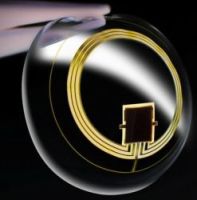Chip in the eye to keep the doctor away

Thought I would do a quick post ahead of my usual Friday ramblings because a press release came in earlier today that piqued my interest.
Just yesterday, I'd mentioned to someone that it's been a while since there's been an update on RFID, or radio frequency identification.
The wireless technology had been the toast of the town in the early 2000s, championed primarily by Wal-Mart after the U.S. retailer made it mandatory for its largest suppliers to attach their products with RFID tags.
Singapore also got on the bandwagon, opening a research facility focusing on RFID deployments across the region's hospitality and lifestyle markets. Asian retailer Dairy Farm International also deployed the technology at the Singapore distribution center, which supports its supermart chain Cold Storage.
RFID later basked in the limelight of near-field communications where the chip, when embedded in mobile phones, allows consumers to make payments simply by waving their devices.
One of the benefits the technology was touted to provide had been in healthcare services, where RFID would help curb drug counterfeiting and reduce human error and ensure patients are dispensed the right medication. A 2006 pilot trial in Germany also looked at how it can help monitor blood supplies.
Little has developed in the past year, well, until the press release arrived in my inbox.
STMicroelectronics, with partners with Sensimed and iSuppli, says it will develop contact lenses embedded with RFID chips to help patients suffering from glaucoma, better manage their condition. The incurable disease is the second-most common cause of blindness across the globe, but can be controlled if properly diagnosed and treated.
Coined the Sensimed Triggerfish, the RFID-embedded contact lens monitors the curvature of the eye and provides intraocular pressure (IOP) data that's needed for the diagnosis and treatment of glaucoma.

The lens is designed such that the chip will not interfere with the patient's vision.
Wearing a microchip on the eye may seem squeamish to some, but the ability to better manage and treat their condition will come as a relief for glaucoma patients worldwide, a number that's estimated to reach 60 million by 2012.
Now that's what I'd call a pretty cool example of how technology can be put to better use.